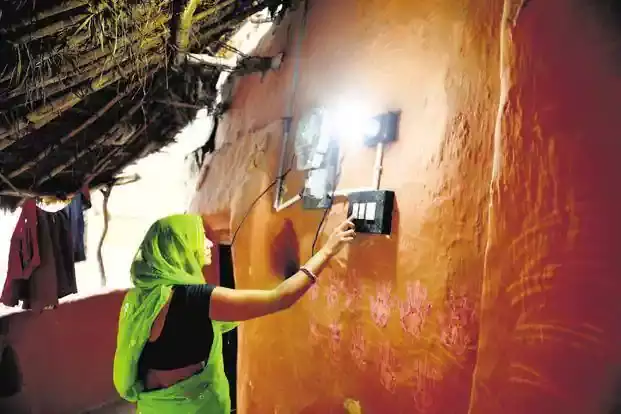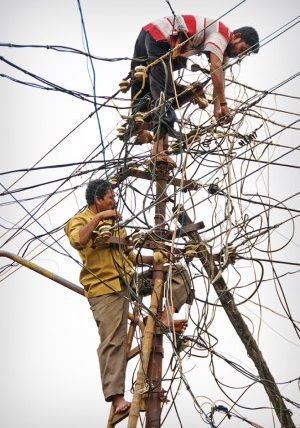
Access to electricity is a crucial factor for economic growth and quality of life in any society. However, many rural communities around the world still lack access to electricity, and this lack of access can have a profound impact on daily life, including education, health, and economic opportunities. While the electrification of rural areas is a complex challenge, solar energy has emerged as a viable and sustainable solution. In recent years, advances in solar technology have made it more affordable and accessible than ever before, and it has the potential to transform the lives of millions of people living in rural areas. In this blog post, we will explore the benefits of using solar energy for rural electrification and how it can help to overcome the challenges that rural communities face.
Challenges of Rural Electrification
Rural electrification, which refers to the process of bringing electricity to remote and underserved areas, is a critical issue in many developing countries. While access to electricity is essential for economic growth, improved health outcomes, and enhanced quality of life, there are several challenges that hinder the progress of rural electrification efforts.
One of the most significant challenges of rural electrification is limited access to electricity infrastructure. Many remote areas lack the necessary infrastructure such as power lines, transformers, and other electrical equipment, making it difficult to connect these communities to the grid. Additionally, the cost of extending the electricity grid to remote areas can be prohibitively high, which makes it unfeasible for utility companies to invest in rural electrification. As a result, many rural communities are left without access to electricity.
Another challenge of rural electrification is the dependence on expensive and unreliable sources of energy. Many rural communities rely on traditional sources of energy such as biomass, kerosene lamps, and diesel generators, which are often expensive and emit harmful pollutants. These sources of energy are also unreliable, with frequent power outages and blackouts that disrupt daily life and economic activities. As a result, rural communities often struggle to access the energy they need to power homes, businesses, and essential services.

Environmental and health risks are also a significant challenge in rural electrification efforts. Traditional sources of energy such as biomass, which are commonly used in rural communities, can have severe health and environmental impacts. Exposure to indoor air pollution from cooking with biomass fuels can lead to respiratory diseases such as asthma and chronic obstructive pulmonary disease (COPD). Burning biomass fuels also contributes to deforestation, which can lead to soil erosion and the loss of biodiversity.
Solar energy is a viable option for rural electrification due to its versatility, sustainability, and cost-effectiveness. Rural areas are often characterized by limited access to electricity, making it difficult to perform essential tasks such as lighting, heating, and refrigeration. In many cases, rural populations depend on expensive and unreliable sources of energy such as diesel generators, kerosene lamps, and firewood. This not only contributes to air pollution and deforestation but also poses health risks to the inhabitants. Solar energy, can also, can be produced even on days when the sun is obscured by clouds, and a solar battery system assures that energy can be accessed even at night. According to the World Bank, it is the only technology that can work anywhere, despite the fact that there are geographical differences in the resource (in this case, the sun). Once the installation is finished, there is very little that needs to be done in terms of maintenance, and there is no need to control the site in advance.’
Solar photovoltaic (PV) systems provide a sustainable and efficient solution to the challenges of rural electrification. The technology harnesses the energy of the sun to produce electricity, which can be stored in batteries for use at night or during cloudy weather. Unlike other renewable energy sources such as wind and hydropower, solar energy is not location-dependent and can be generated anywhere, making it a suitable option for remote areas with no access to the power grid.

Importance of solar energy for rural economic development:
Access to affordable and reliable energy is critical for the growth and development of rural economies. Unfortunately, many rural areas around the world are still without access to reliable electricity, and those that do have access often rely on expensive and unreliable sources such as diesel generators or kerosene lamps. This has significant economic and social implications for rural communities, as it hinders the development of businesses and industries, limits access to education and healthcare services, and perpetuates poverty.
Solar energy is an attractive option for rural communities as it provides a clean, sustainable and cost-effective alternative to traditional energy sources. Solar panels can be installed in rural areas to generate electricity that can power homes, businesses and public services, reducing dependence on unreliable and costly energy sources. With solar energy, rural communities can generate their own power, and even sell excess electricity back to the grid, creating new opportunities for entrepreneurship and income generation.
One area where solar energy can have a significant impact is in agriculture. Solar-powered irrigation systems can help farmers to irrigate their crops, boosting agricultural productivity and income. In addition, solar-powered cold storage facilities can enable farmers to preserve their crops for longer periods, reducing post-harvest losses and enabling them to sell their produce at higher prices.
Another area where solar energy can have a transformative impact is in education. Many rural schools lack access to electricity, which makes it difficult for students to study in the evenings and limits the use of digital technology in classrooms. Solar-powered lighting and charging stations can enable students to study after dark, while providing teachers with access to digital tools and resources to support their teaching.
Overall, the importance of solar energy for rural economic development cannot be overstated. It provides an affordable, reliable and sustainable source of energy that can help to spur economic growth, create jobs and income-generating opportunities, and improve the quality of life for rural communities.
Potential for solar energy to transform rural communities
Solar energy has the potential to transform rural communities by providing access to clean, reliable and sustainable energy that can power homes, businesses, and public services. This can help to bridge the energy access gap that exists in many rural areas, while reducing the environmental impact of energy consumption. By harnessing the power of the sun, rural communities can leapfrog traditional fossil fuel-based energy systems, avoiding the environmental damage and public health risks associated with these sources.
In addition to providing energy, solar power can enable rural communities to harness new economic opportunities. The installation, maintenance and repair of solar panels can create jobs and income-generating activities in rural areas, providing new opportunities for entrepreneurship and innovation. Moreover, the use of solar energy can support the development of new value chains, such as the production of solar panels, batteries, and other solar-related equipment, providing new opportunities for local industries and businesses.
One of the most significant benefits of solar energy is its ability to promote social and environmental sustainability. By providing access to clean and sustainable energy, rural communities can reduce their carbon footprint, and minimize their impact on the environment. This can help to mitigate the impacts of climate change, while improving the health and well-being of rural communities.
Another potential benefit of solar energy is its ability to improve the resilience of rural communities to natural disasters and other crises. In areas that are prone to natural disasters such as hurricanes or earthquakes, solar energy can provide a reliable source of energy that is not dependent on external fuel sources. This can help to ensure that essential services such as healthcare and emergency response are available in times of crisis.
In conclusion, solar energy is a viable and sustainable solution for rural electrification, with the potential to transform the lives of millions of people living in rural areas. As we have seen, the benefits of solar energy for rural electrification are many, including affordability, accessibility, and sustainability. Additionally, solar energy can help to overcome the challenges that rural communities face, such as limited access to electricity infrastructure, dependence on expensive and unreliable sources of energy, and environmental and health risks. By embracing solar energy for rural electrification, we can improve the quality of life for people living in rural areas, support economic growth, and promote sustainable development. While there are still many challenges to be addressed in the electrification of rural areas, solar energy offers a promising solution, and it is a crucial step towards a more equitable and sustainable future for all.

